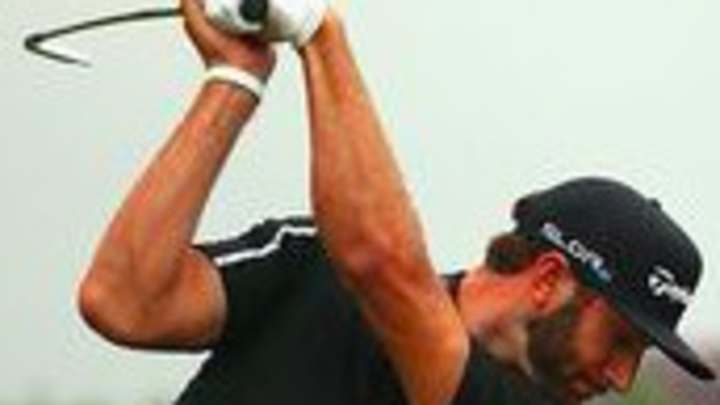Dustin Johnson bowed-wrist golf swing not for everyone

Most golfers who attempt to swing a club like Dustin Johnson, whose super-supinated left-wrist position at the top of the swing is unlike any No. 1 player in golf history, might struggle to make solid contact, if not remain standing upright.
“Even if you try,” golf instructor Jim McLean said, “you almost can’t get your wrist into that position.”
These days, it has become Position A.
Five prominent players with bowed left wrists have stormed to the top of the game, including Johnson, two-time major champion Jordan Spieth, newly minted Masters winner Sergio Garcia and a three-time PGA Tour winner this season, Justin Thomas. All are ranked in the world top 10, and the hottest prospect in the game, Spanish rookie Jon Rahm, already has climbed to No. 13.
Johnson, Spieth and Garcia have claimed four of the past nine major titles, and Johnson has won his past three PGA Tour starts. Just like that, a swing peccadillo that for decades was viewed with raised eyebrows has become a talking point.
“There are teachers out there thinking, This is the new way to swing,” instructor David Leadbetter said.
It’s an old way, too. A smattering of top players over the years have had bowed wrists, including Lee Trevino, Tom Weiskopf and Gary Player. But it’s odd that in an era of cookie-cutter swing theory that five have ascended the rankings at the same time.
Johnson and Rahm, two extremely strong players with top-tier swing speeds, are the most obvious purveyors of the big bow at the apex of the swing. That both are homegrown and largely organic players probably is no coincidence. McLean’s son, Jon, played junior golf against Johnson, whose wrist has been acutely bowed since he was a teenager.
“I remember telling Dustin when he was young, ‘Don’t let anybody change that part of your swing,’ ” McLean said.
Nobody did. Johnson stormed through Q-School after college and has won in each of the past 10 seasons on Tour as instructor Butch Harmon left the untraditional swing largely untouched.
Most teachers long have espoused a swing in which right-handed golfers seek a flat, or even cupped, left wrist at the top. The World Golf Hall of Fame is full of players who followed that direction. Of the modern era, Adam Scott still prompts swing envy from his peers partly because of his picturesquely flat left wrist at the top. Gary Player theorizes that players with bowed left wrists have shorter careers, because they eventually lose the strength required to make the necessary corrections during the downswing. Player believes he could have won twice as many majors had he changed his swing early in his career.
“It’s not a natural thing to do,” Leadbetter said of the bowed position. “The club naturally wants to be in a cupped position at the top. But for these guys, it’s an instinctive way to do it, and they make natural compensation elsewhere in the swing.”
Johnson’s clubface is so delofted and hooded at the top, locked in a power position, that it makes traditionalists cringe. That said, Johnson almost never slices a shot and is among the game’s longest players. However, those attempting to replicate his unusual move might want to think twice.
“You’d better have a good chiropractor,” Leadbetter said.
In simplest terms, Leadbetter said the shut position usually is best suited for stronger players and those with higher swing speeds who can get the club into the proper position at impact. For amateurs, most of whom have an outside-in swing path, a closed clubface might cause the ball to curve even more.
“So, the $64,000 question becomes, ‘Would you want to teach all kids to swing it like D.J.?’ ” Leadbetter said. “To me, the answer is no, because it’s definitely not a natural thing.”
In contrast to the aforementioned five, Henrik Stenson, a world-class ballstriker, slightly cups his left wrist at the top, as do many other players.
“They all get it bowed at some point,” Leadbetter said. “It just so happens that those (five) guys get it bowed early. Guys like Ben Hogan, Henrik Stenson, they get it bowed coming down. Whether you are bowed at the top or coming down, regardless of how you get there, there has to be some sort of shutting down of the left wrist, because that’s how the clubface gets square.”
Most swing experts still believe that a flat or slightly cupped angle at the top gives players the best chance to succeed over the long haul.
But clearly not the only chance.
“You know how teachers are, and now people are looking at the bowed wrist (as an advantage),” McLean said. “What this ultimately says is that there are different ways to be great.”
